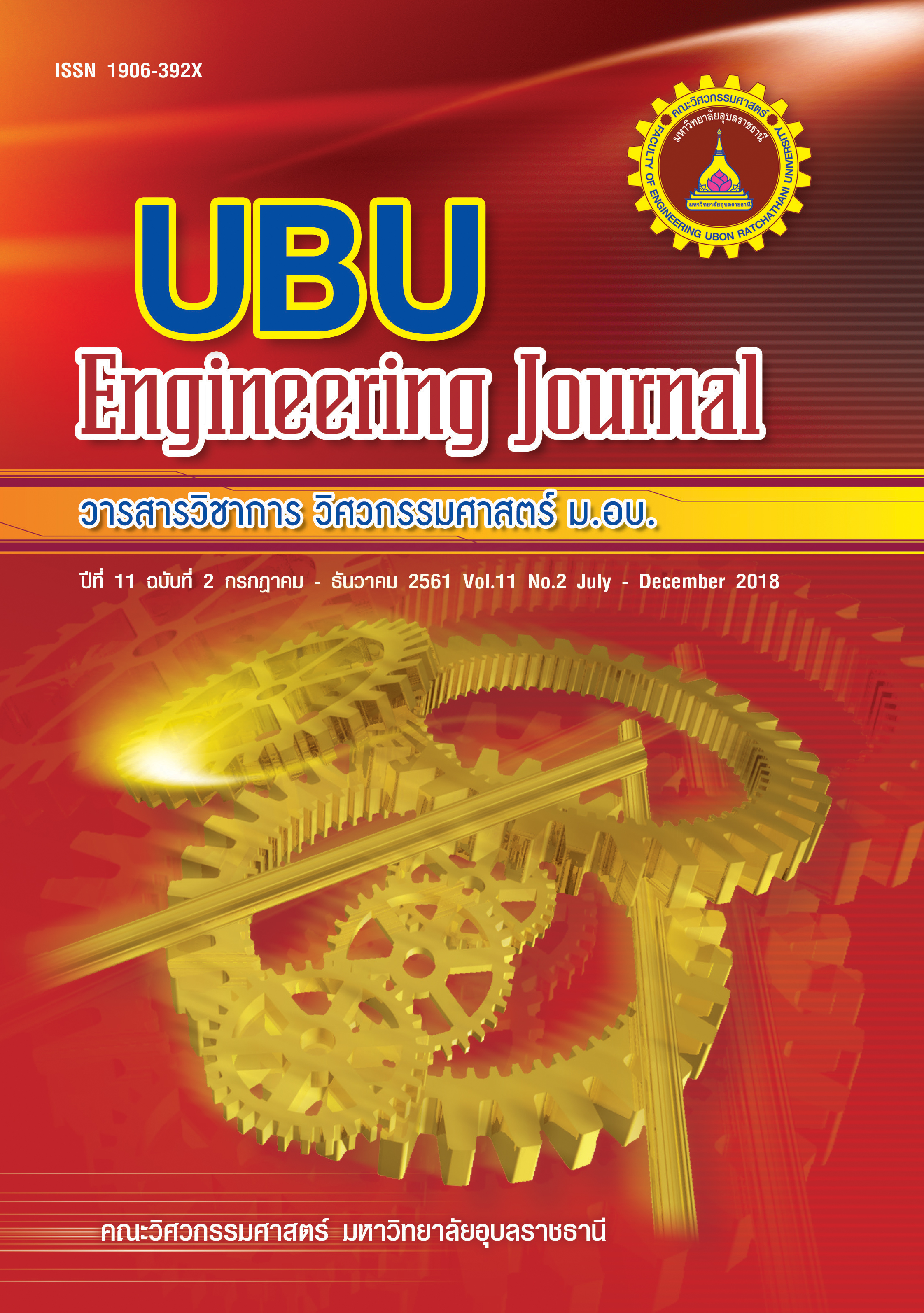ผลของความหนาแน่น และอัตราส่วนที่มีต่อปริมาณช่องว่างอากาศในคอนกรีตมวลเบาแบบเซลลูล่าที่ใส่สารลดน้ำปริมาณมาก
Main Article Content
Abstract
This paper presents the test results and the study of the effect of concrete density and mixed design on the air content of the cellular lightweight concrete with superplasticizer. In this study, the cellular lightweight concrete with 1,600 and 1,800 kg/m3 using four different water to cement ratios of 0.3, 0.35, 0.4 and 0.45, three different sand to cement
1วารสารวิชาการ วิศวกรรมศาสตร์ ม.อบ. ปีที่ 11 ฉบับที่ 2
วารสารวิชาการ วศิวกรรมศาสตร์ ม.อบ. ปีที่ 11 ฉบับที่ 2 2
ratios of 2:1, 3:1 and 4:1, and 2 amount of superplasticizer of 0.5% and 1% are produced. Then, the air content of cellular lightweight concrete with superplasticizer is determined using ASTM C128 for the determination of concrete specific gravity. The results show that the air contents of cellular lightweight concrete with superplasticizer are found to range from 31.51–38.96%. The air content of the cellular lightweight concrete with superplasticizer depends mainly on the amount of foam used in the concrete and also mixed design. It tends to increase as a) the density of concrete decreases b) the water to cement ratio increases only in the concrete samples with mixed design using 0.5% of superplasticizer c) the sand to cement increases or d) the amount of superplasticizer increases only in the concrete samples with mixed design using low sand to cement ratios and low water to cement ratios.
Article Details
References
[2] Gambhir ML. Concrete Technology: Theory and Practice, 5ed. New Delhi: McGraw Hill Education (India) Private Limited; 2013.
[3] Thai Industrial Standard Institute. Ministry of Industry 2601–2556. Cellular Lightweight Concrete Blocks using Preformed Foam. TIS 2601–2556. 2556.
[4] Robler M, Odler I. Investigations on the relationship between porosity, structure and strength of hydrated portland cement pastes: Effect of porosity. Cement and Concrete Research. 1985; 15: 320–30.
[5] Hoff GC. Porosity-strength considerations for cellular concrete. Cement and Concrete Research. 1972; 2: 91–100.
[6] Ziembika H. Effect of micropore structure on cellular concrete shrinkage. Cement and Concrete Research. 1977; 7: 323–32.
[7] Roulet CA. Expansion of aerated concrete due to frost determination of critical saturation. In: Wittmann FH, editor. Proceedings Autoclaved Aerated Concrete, Moisture and Properties. Amsterdam: Elsevier; 1983. p. 157–69.
[8] ชัชวาลย์ เศรษฐบุตร. คอนกรีตเทคโนโลยี. บริษัท ผลิตภัณฑ์และวัสดุก่อสร้าง จ ากัด (CPAC) พิมพ์ครั้งที่ 4. 2540.
[9] Powers TC. Topics in Concrete Technology, 3. Mixture Containing Intentionally of Entrained Air Journal of the PCA Research and Development Laboratories. 1964; 6(3): 19–41.
[10] Nambiar EKK, Ramamurthy K. Air void characterisation of foam concrete. Cement and Concrete Composites. 2007; 37: 221–230.
[11] ธนภร ทวีวุฒิ, นท แสงเทียน, วิวัฒน์ พัวทัศนานนท์. ปริมาณฟองอากาศในคอนกรีตมวลเบาแบบเซลลูล่า. วิศวสารลาดกระบัง. 2558; 38(2): 67–72. [12] ASTM C128-97. Standard Test Method for Specific Gravity and Absorption of Fine Aggregate. West Conshohocken: ASTM International; 2001. [13] Craig RF. Soil Mechanics. Chapman &Hall; 1996. 12

